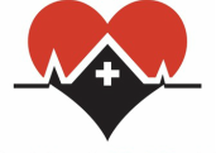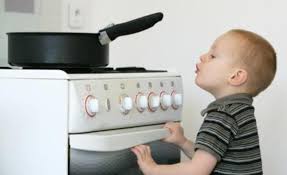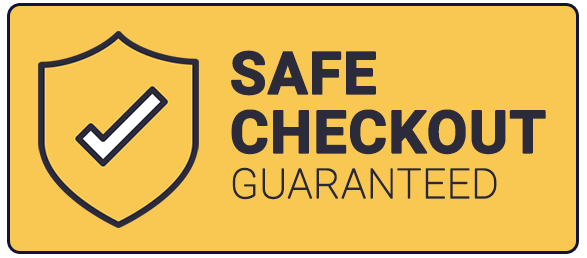4 TIPS TO KEEP YOUR TODDLER SAFEYoung children are often care-free, reckless, and don't seem to adhere to personal safety. Their newly-found motor skills can create a mixture of unknowing behavior that requires constant supervision. For new parents and caregivers, this can be both stressful and frightening. However, with the added knowledge and skills, you can be prepared for any scenario. In this article we will review four essential safety tips can that can help you safeguard and protect the livelihood of your child. 1. Become CPR certified and learn how to administer choking aid. First on this list of child safety tips is CPR. CPR (cardiopulmonary resuscitation) is a life-saving skill that can allow the preservation of brain function in the event of heart failure. CPR uses chest compressions and (often) artificial ventilation to ensure and maintain blood flow and provide oxygen to the brain. According to the American Heart Association, over 7,000 children suffer an out-of-hospital cardiac arrest annually. The survival rates for children are dependent on the presence of an individual who knows how to perform a CPR immediately. To ensure that you are one of those individuals, it’s imperative to become CPR certified. During a CPR certification course with Help-A-Heart CPR, you'll learn how to perform CPR on adults, children, and infants so you’ll know just what to do in the event of a medical crisis. CPR certification courses at Help-A-Heart CPR also teach students how to administer aid for another common emergency that toddlers often experience which is choking. The childhood fascination and interest in foreign objects approaching and/or entering the mouth can result in airway obstructions. Despite continuous parenting, choking events can and do occur. Should complications arise in that moment, you need to be ready. CPR courses teach you how to administer specialized choking aid for children and infants as well as adults. 2. Keep your home free of hazardous areas. There are various areas and items within the common household that can pose serious safety risks to your toddler. The most common safety risk accessible to many toddlers are household cleaning products. Detergents, polishes, oils, and other synthetic chemicals can be lethal if ingested. It is important to keep these items securely locked up or stored on unreachable top shelves with child-safe caps. If your toddler does manage to swallow something poisonous, immediately notify the Poison Help hotline at 1 (800) 222-1222. Second, firearms and weaponry are another class of dangerous items often found in homes. If you own a weapon, make sure it is securely locked and hidden from your toddler. Lastly, it is critical to address general areas in your home that may lead to injury for adventurous toddlers. For example, the corners of tables and countertops (which can be padded with foam), large staircases (which can be protected with a child-proof gate), and windows (which should always be locked). 3. Prevent falls and burns. There are additional areas, besides windows and stairs, that can lead to serious fall injuries for toddlers. These may include basement and attic entries, recklessly leaving chairs next to counters or tables, and many things that the child may experience outside.. While quick locking and rearranging can toddler-proof your indoor space, you also need to outdoor-proof your toddler when he or she goes outside. Always carry disinfectant and bandages on trips to the playground, and make sure your toddler wears a helmet if he or she attempts to ride a bike. Most importantly, keep a close eye on your little one at all times. Second, fire is yet another major hazard for toddlers not just at home but also outside the home. The kitchen is one of the biggest sources of fire and heat. Consequently, toddlers should be kept away from the fire source and/or kitchen away while you are preparing food. Toddlers should also be kept away from heaters or other hot objects in bedrooms and living rooms. Finally, keep hot items such as cups of coffee or hot food out of reach of your toddler. Teaching fire safety to toddlers should be a point of emphasis whenever possible, but if he or she does get burned, keep cold water on the area for several minutes, then apply a dry bandage. Also, make sure all smoke alarms are working in your home. 4. Automobile safety. Last on the list is automobile safety. The car is a potential safety hazard for all passengers, especially young children. In the United States, motor vehicle crashes are a leading cause of death among children. In 2018, 636 children 12 years old and younger died in motor vehicle traffic crashes, and more than 97,000 were injured. Of the children 12 years old and younger who died in a crash in 2018 (for which restraint use was known), 33% of the children were not buckled up. Child restraint systems are often used incorrectly. Unfortunately, an estimated 46% of car seats and booster seats (59% of car seats and 20% of booster seats) are misused in a way that could reduce their effectiveness. Parents and caregivers can make a lifesaving difference. Always drive safely and ensure that your toddler is placed in a child-safety car set before even starting the ignition. Additional reminders are to never leave your toddler alone in the care, even if you’ll only be gone for a minute. Would you like to learn more about pediatric and child safety? Are you ready to learn the necessary skills to keep your child safe in any situation? Our team at Help-A-Heart CPR is here to help. Email us or call us at (210) 380-5344 to get your questions answered and enroll in one of our pediatric and child CPR and First Aid classes today!
Comments
|
AuthorDr. Tracy A. Jones is the CEO of Help-A-Heart CPR, LLC and an American Heart Association, ASHI, and American Red Cross Master Program Trainer, Instructor, & AHA Faculty Member located in San Antonio, Texas. Archives
June 2024
Categories |
Help-A-Heart CPR, LLC | 1747 Citadell Plaza Suite 101 | San Antonio, Texas 78209 | (210) 380-5344 | [email protected]
Copyright © Help-A-Heart CPR, LLC 2024
100% Certification Acceptance
We promise your employer, school, or agency will accept the certification card we issue to you. If there is a question of acceptance or validity, simply send us an email at [email protected] with full details. We will reach out to the individual/entity and provide accreditation information. If still there’s a question, we will provide you with a full refund of your class fee. It’s that simple.
We promise your employer, school, or agency will accept the certification card we issue to you. If there is a question of acceptance or validity, simply send us an email at [email protected] with full details. We will reach out to the individual/entity and provide accreditation information. If still there’s a question, we will provide you with a full refund of your class fee. It’s that simple.
|
Communities Served
ALABAMA: Birmingham
ARKANSAS: Fayetteville, Hot Springs, Jonesboro, Little Rock NEW MEXICO: Albuquerque TENNESSEE: Knoxville TEXAS: Amarillo, Arlington, Austin, Bandera, Bastrop, Boerne, Brownsville, Comfort, Converse, Corpus Christi, Dallas/Ft. Worth, Del Rio, Dripping Springs, El Paso, Floresville, Fredericksburg, Georgetown, Harlingen, Houston, Junction, Katy, Kerrville, Kingsville, Kingwood, Laredo, Lubbock, Lufkin, McAllen, Midland, New Braunfels, Odessa, Pleasanton, Round Rock, San Angelo, San Marcos, Schertz, Seguin, Taylor, Temple, Texarkana, Tyler, Universal City, Victoria, Waco, The Woodlands |
Why Choose Help-A-Heart CPR?
1. Flexible Scheduling
2. On and Off Location Training Available 3. Casual, Fun Atmosphere 4. Best Price Guarantee 5. All Instructors are AHA and/or ARC certified 6. 5 Star Google Reviews 7. Blended Learning (Online & Skills Check) Available 8. Meets OSHA & College CPR Requirements 9. Get Certified Within 3-4 Hours 10.Certification Is Good For Two Years 11. Official AHA/ARC/ASHI Training Site 12. High Quality Safety Training! |








